Today’s topic we will discuss the Top 10 Best Low Carb Diet for Weight Loss in Malaysia. Supposed this is a very familiar conversation between our fellow Malaysians!
A: “Ugh! I really want to eat something la…”
B: “Serious not? It’s almost 12am already!”
A: “Serious la. Jom mamak?”
B: “Okok la!”
Did you know that our eating habits affect our weight and health greatly? Malaysia’s melting pot of good food and cuisine is also one of the major causes of obesity!
Have you ever heard about different types of low carb diets? Keto, Atkins, Whole30… Low-carb diets have grown in popularity over the years and many people have been using it as methods to lose weight. Let’s take a look to understand about the top 10 best low carb diet for weight loss in Malaysia.
What is a low carb diet?
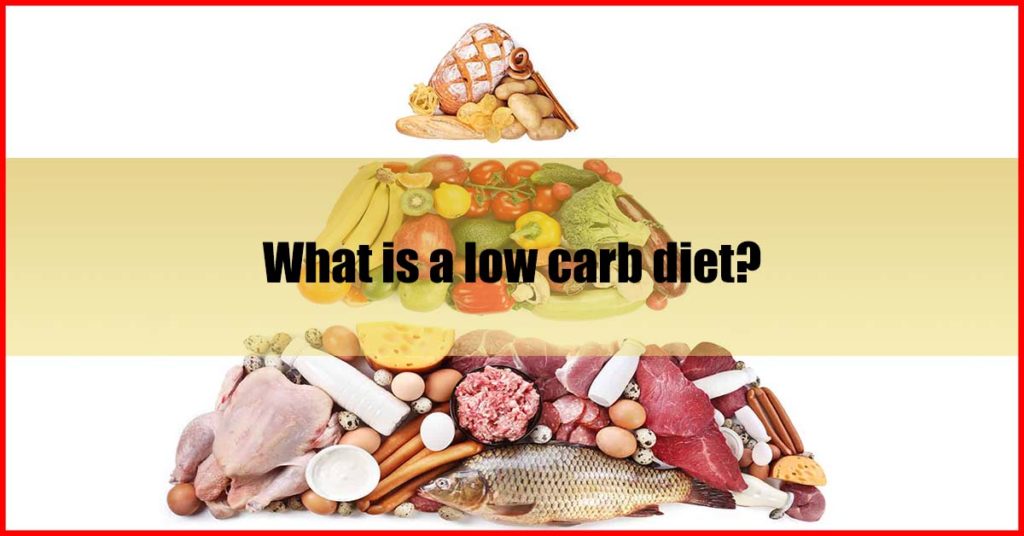
A low carb diet (known as low-carbohydrate diet) generally means any diet that limits the number of carbohydrates in the daily meals. Low-carbohydrate diets have been popular over the decades as methods to lose weight. While other diets ask dieters to count calories and limit their portions, the low carb diet is liberation to those who want to shed some pounds without the need to limit how much they eat. It is just carbohydrates that you need to control!
Low-carb diets have been proven to help improve health markers such as blood sugar, blood cholesterol, blood pressure and many other diseases.
Like all diets, there is no one low carb diet that fits all. There is no best low carb diet either! The point to make a low carb diet a successful one is to be set physically and mentally. Once you are sure that this particular diet is the one you want, persevere and pull through!
What is the best low carb diet for weight loss?

According to our research, the following are the most effective different types of low carb diets for weight loss in Malaysia:
Typical Low Carb Diet
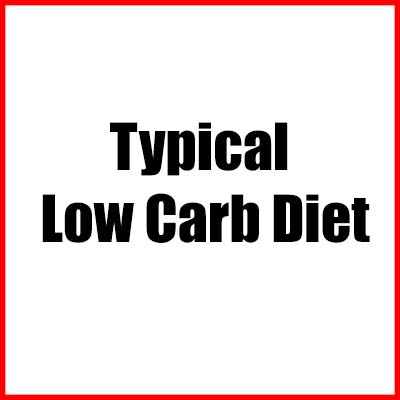
This is a diet just like the name suggest. It has no fixed definition or formula. A typical low-carb diet = eating fewer carbohydrates than the normal diet. While restricting carbohydrates, this diet tends to focus on consuming more proteins. Meats, eggs, fish, nuts, healthy fats, fruits and veggies are common foods that should be taken. High carbohydrate foods such as grains, potatoes, junk food and sugared drinks should be minimised.
All in all, this is a personalised diet where you are able to choose what carbs you want to include in your low carb diet. This is best for people who want the freedom to choose the foods in their diet plan instead of following a rigid plan that tells them what to eat.
Recommended carb intake (grams) generally depends on your preference and weight loss goals. Common suggestions are:
- Less than 50 grams: Targeting fat weight loss. Vegetables should be taken at plenty, but fruits should be limited to those with low-carbs e.g., berries.
- 50 to 100 grams: Targeting slow and steady weight loss or maintenance. There is plenty of room for vegetables and fruits.
- 100 to 150 grams: For weight maintenance or frequent high-intensity exercises. There is also plenty of room for vegetables, fruits and sometimes some starchy foods like potatoes.
Research has shown that there may be advantages of going on a low-carb diet. Obese adults that went on a low-carb diet found to have positive effects on cholesterol levels.
Ketogenic Diet
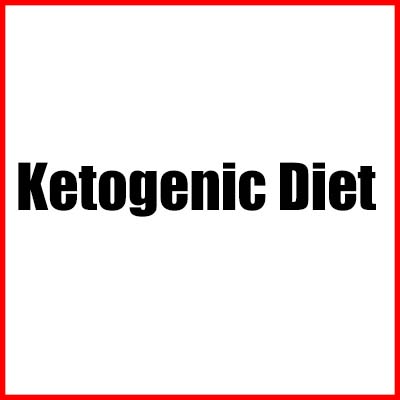
You have probably heard about the Keto Diet or see ‘Keto-friendly’ words on food packaging. The popular Ketogenic diet (keto diet, for short) is a strict one to follow! A diet that focuses on high fat, moderate protein and a very low amount of carbohydrates. Carbohydrates in the ketogenic diet are generally limited to less than 50 grams in a day, sometimes going even lower to 20 to 30 grams a day. Fats will take up about 80% of a daily meal!
As with the name itself, the diet aims to switch your body into a metabolic state called ketosis. When in ketosis, the insulin levels in the body decrease so low that the body will release large amounts of fatty acids from fat stores. These fatty acids are turned into ketones in the liver and ketones are able to supply energy to the body. Our body will start to rely on ketones as the main source of energy instead of glucose.
Types of Keto Diet:
- Standard Ketogenic Diet: Conventional keto eating.
- Targeted Ketogenic Diet: Small amount of carbs added around workouts.
- Cyclical Ketogenic Diet: Cycle between a ketogenic diet on most days and a high-carb diet for one to two days a week.
Benefits of Keto Diet:
- Effectively losing fat, great for bodybuilders
- Major reductions in appetite
- Benefits in chronic illnesses such as drug-resistant epilepsy in children, type 2 diabetes, other neurological disorders
You may be able to see quick results in weight loss with the Keto Diet but the limiting factor is that most of the foods come from sources of fat, some protein and non-starchy vegetables. This is quite hard to keep up!
Paleo Diet
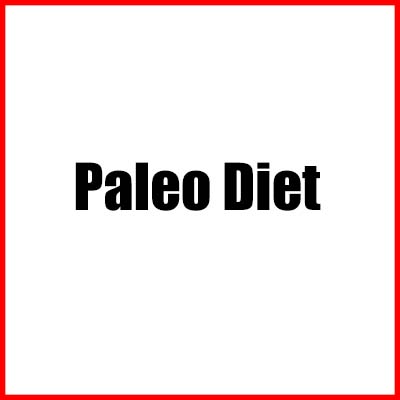
The Paleo Diet is one of the most popular ways of eating around the world! The word Paleo comes from the word ‘Palaeolithic’ or what we have commonly known as – STONE AGE. The diet encourages eating foods that were gathered and hunted by humans in the Palaeolithic era, way before agricultural and industrial revolutions began.
Going caveman! Focus on meats, fish, seafood, eggs, nuts, seeds, vegetables, tubers, fruits, healthy fats and oils, also salt and spices. These are whole and unprocessed foods that were possibly available to our Palaeolithic ancestors. Some low-carb vegetables that can be eaten during a Paleo Diet: cucumbers, tomatoes, zucchini, peppers. It is not a strictly low-carb diet, but you can give it a twist to fit into a low-carb lifestyle.
Processed foods, additional sugar, grains, legumes, dairy products are a strict ‘No-No’ in a Paleo Diet. Simply put: if it looks like it came out of a factory, do not eat it!
If you are very used to having more fibre as compared to proteins and fat, this diet can feel a lil’ heavy for you when you need to fill your stomachs with more meat. The Paleo Diet can be beneficial when exercise is added on!
Atkins Diet
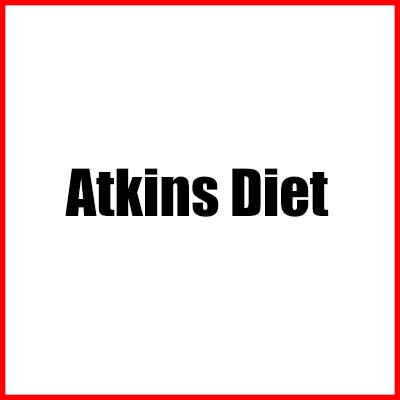
The Atkins Diet is a weight loss diet that was created by Dr Robert C. Atkins in the 1960s. Dr Atkins experimented on a carbohydrate-restriction diet and found it to be very effective in losing weight. If a person strictly follows the stages of carbohydrate restriction, losing additional pounds and maintaining weight goals is highly possible!
Listed below are the five key benefits and advantages of the Atkins Diet:
- There is no need to reduce the portion and amount of food during each meal.
- Control only the carbohydrates.
- There is no need for calorie counting.
- Exercise is not a must!
- Carbohydrates are introduced back into the diet slowly. You can decide which type of carbohydrate suit your body best!
The Atkins Diet can be split into 4 phases which are:
- Phase 1 (Induction): net 20 grams of carbohydrates in a day.
- Phase 2 (Ongoing Weight Loss): net 25-50 grams of carbohydrates in a day, add on low-carb foods slowly.
- Phase 3 (Pre-Maintenance): net 50-80 grams of carbohydrates in a day, progressively add on high-carb foods, look out for what helps to maintain your weight without feeling craved or hungry.
- Phase 4 (Maintenance): can go up to a max of 80-100 grams of carbohydrates in a day, maintain lifelong healthy eating habits as in phase 3.
*All carbohydrates should be added on at 5 grams per week*
The essence of the Atkins Diet is to remove carbohydrates from your daily meals. The goal is to kick start fat burning in your body! When carbohydrates are reduced, this usual source of energy is being switched to fat stores. Now, remember carbohydrate is present in the many foods that we consume daily. It is present in your rice, drinks, certain vegetables, snacks, pastries etc. To ensure that your road to weight loss is a success, consider cutting off all of these ‘dangerous’ food!
Low-carb Mediterranean Diet

This is one very popular diet among healthcare professionals! The low-carb Mediterranean Diet is based on the foods Mediterranean people eat in the earlier 20th century. The Mediterranean Diet is especially recommended as studies show that there were fewer occurrences of cardiovascular diseases amongst people of the Mediterranean countries like Italy and Greece.
What makes it different as compared to the normal low-carb diet? It is the focus of swapping saturated fats for unsaturated fats. For example:
- Fatty fish is preferred as compared to red meat.
- Extra virgin olive oil / nuts / seeds / avocado instead of butter / cream / cheese.
There is much more freedom when it comes to eating in the Mediterranean Diet. You can eat a wide range of foods in the Mediterranean Diet such as vegetables, fruits, nuts and seeds, legumes, tubers, whole grains, fish, seafood, poultry, eggs, yoghurt, and healthy fats. There is much more freedom when it comes to eating in the Mediterranean Diet.
It is one of the more recommended ways of a low-carb diet as research has shown it helps to prevent heart disease, type 2 diabetes and even breast cancer. This is especially true since the diet emphasises heart-healthy good fats. Although the Mediterranean Diet does not limit carbohydrates to the extreme, it would be beneficial in losing weight when carbs are cut down to less than usual. To make it low carb, ensure that carbohydrates take up to no more than 50% of calories in a day, at least 30% from healthy fats, and the rest of it focuses on whole grains, vegetables and fruits.
Low-Carb, High-Fat (LCHF) Diet

LCHF stands for ‘low-carb, high-fat’. It may sound like the Keto Diet or the Atkins Diet that is because both these diets are under the LCHF umbrella. The main difference is that the body will not enter a fat-burning state. This diet emphasises greatly on eating whole, unprocessed foods. As with most diets, it focuses on meats, fish, shellfish, eggs, dairy products, nuts, berries and vegetables. Carbohydrates are recommended to be limited at a range of 100 to 150 grams per day (about 25% of calories in a day). Fat will account for about 60% of calories daily.
Having a reasonable portion of carbohydrates makes it easier and practical to follow a diet.
Possible benefits of Low-Carb, High-Fat Diet:
- Helps in weight loss, especially in the belly area but long-term health advantages still require more research.
- Workout performance benefits as the diet teach your body to use fat as the main source of fuel.
- Improving diseases like diabetes, heart diseases and neurological diseases.
As with all low-carb diets, yes, you should limit your carbohydrates. Limit the additional sugars, sweeteners, grains and starchy pastries, starchy vegetables and high-carb fruits, processed foods and those labelled with ‘low-fat’ or ‘diet’ items.
The flexibility of the LCHF Diet enables you to plan ahead for any meal. Use fresh, whole ingredients during the cooking process so that you can also try new recipes!
Whole30 Diet
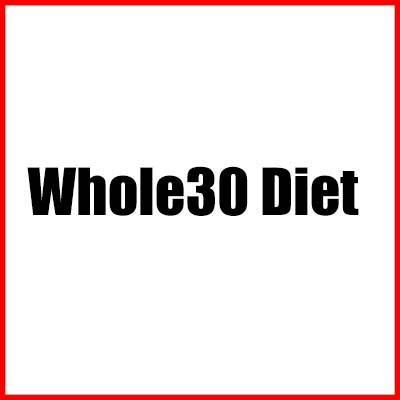
Whole30 is more of an eating programme than a diet. It was not designed to be specifically low in carbohydrates. For 30 days, one should stay away from added sugars of any kind such as alcohol, legumes, grains and dairy products. Generally, any form of food that will cause problems in cravings, habits, blood sugar ad hormone regulation, digestion and the immune system should be removed for 30 days. This of it as a RESET! Focus on seafood, meat, vegetables, fruits and fat as components of your meal.
This is supposed to be a short-term challenge and will help to lose some weight if one can follow through. It is a tough one if you are unable to persevere and put your determination to complete the Whole30 Diet. It would be great with there is a support group. Gather a few friends or family to join you in the Whole30 programme so that you can motivate each other when the going gets tough!
Another food for thought would be if you do complete the entire 30 days, what is the next best step to move forward? Post 30 days of Whole30, one should carefully reintroduce foods one at a time, take note of the foods that will cause you to awaken hunger or carvings. Be sure to remove them and keep only those that will help you feel better in life. Whole30 is for those who want to improve sleep, have more energy, better digestion and fewer cravings!
The South Beach Diet
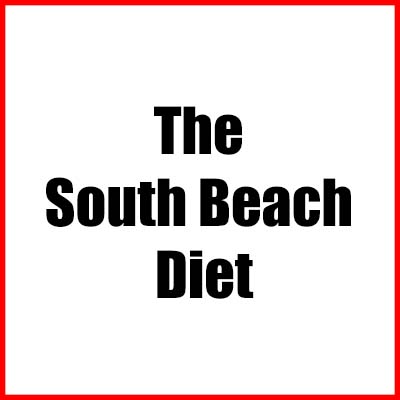
If you are purely aiming at losing some pounds, the South Beach Diet is for you! It is not necessarily a strict low carb diet and ‘good carbohydrates’ can be added in after the first phase. The South Beach Diet focuses on lean protein and healthy fats. Another important point is that the South Beach Diet emphasises eating before hunger strikes. That is why the South Beach Diet has main meals and snacks every day. Phased diets like this one are able to show dieters great results in the initial phases and will make them stick to the diet plan longer. The South Beach Diet is quite similar to the Atkins Diet but stands out where it recommends eating less salt and saturated fat.
Three phases of the South Beach Diet include:
- Phase 1: Resetting the body to help burn fat, reducing sugar and starch cravings. Remove all forms of carbohydrates and refined sugar foods.
- Phase 2: Slowly add good carbs into the diet for steady weight loss. Good carbs such as air-popped popcorn, tortillas are allowed. If carbohydrates should be added to the meal, choose foods with a low glycaemic index.
- Phase 3: Maintain weight goals without depriving foods or hunger.
If you are the lazy type to step into the kitchen, the South Beach Diet has its own brand of frozen foods, snacks and shakes that can be bought from their website. The downside is that you may be limited with your choices of meals when there is no need to cook.
Zero Carb Diet
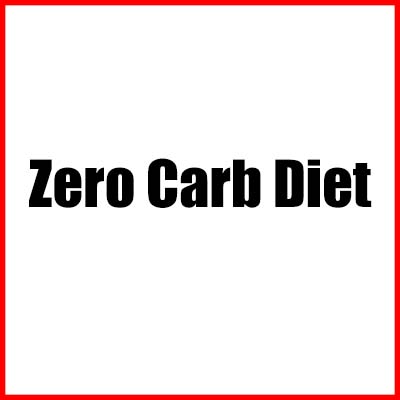
A zero carb diet is quite extreme. The diet removes all sources of carbohydrates in daily meals and includes only animal foods. If you are a super meat lover this could be the diet for you! Roar, roar, carnivore! Meat, fish, poultry, eggs, butter and lard are the foods that should be taken in the Zero Carb diet. It even eliminates all vegetables!
The Zero Carb Diet, or what we called as the Carnivore Diet, is often a step taken by people who had tried the Keto Diet. Let’s be honest, too much fat is quite a heavy meal plan to adapt too and most would prefer a high-protein diet.
While there are no studies that show people on the Zero Carb diet had any health issues, on the other hand, no studies are proving their benefits either. The Zero Carb diet lacks important nutrients such as fibre, vitamins and some minerals. Digestion may also be affected due to the lack of these important nutrients. This is why this method is often discouraged.
Dukan Diet
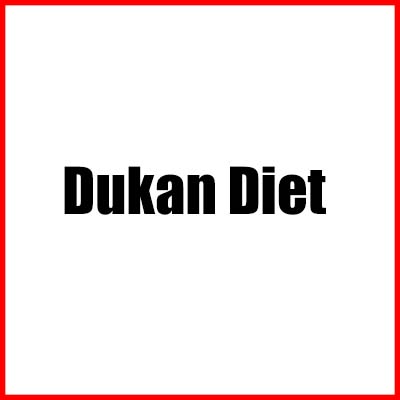
Created by Dr Pierre Dukan in the 1970s when an obese patient said he would do anything to lose some weight, except to give up meat; the Dukan Diet was born. It is a low-carb, high-protein diet. The Dukan Diet may not be the best diet amongst all these but like the Atkins Diet, it helps to gradually add on foods to maintain a healthier lifestyle. Similar to the Atkins Diet, it has four phases.
- Phase 1 (Attack Phase): Focus on foods high in proteins. Add on a brisk walk of 20 minutes a day.
- Phase 2 (Cruise Phase): Add in the non-starchy veggies. Alternate between days of lean protein and lean protein + non-starchy veggies. Also, brisk walk for 30 minutes a day.
- Phase 3 (Consolidation Phase): Gradually introduce carb-containing foods like fruits and whole-grain bread and also some fats. Brisk walk for 25 minutes a day. Keep one day of the week for lean meat only.
- Phase 4 (Stabilisation Phase): Eat food from all food groups to maintain weight loss, exercising with a brisk walk or stairs climbing. Continue to keep one day of the week for lean meat only.
The progressive phases make it a more stable form of diet that is supposed to help in building a healthier eating habit. However, the high protein initial phase may increase the risk of getting kidney stones, so if you have a history of kidney stones, you may want to refrain from this diet and try out some other ones.
Conclusion
There are no same low-carb diets and different low-carb diets bring about different results to your health and body. Nevertheless, the idea of all diets is to limit carbohydrate intake in our daily lives. Many cultures and diets have carbohydrates as the main source of energy, and in the long run, we have witnessed that excessive carbohydrates give rise to many health issues. Perhaps, a low carb diet is not at all a bad thing when we learn how to balance our macronutrients in our everyday lives.
While you are maybe picking one of the top 10 best low carb diet for weight loss in Malaysia listed above, keep in mind to always stick to the low carb diet rules and persevere through! Of course, there may be days when we exceed the carb limits or indulge in sinful high-carb foods, but do not worry, one wrong move does not equal a failed diet plan! It is most important not to give up and to make low-carb into a lifestyle!

